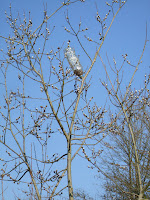
WEST HARNHAM CHALK PIT
OS Grid Reference: SU128288
Introduction
The abandoned West Harnham Chalk Pit is located on the south side of the River Nadder on the south-western outskirts of Salisbury (Figure 3.43), with fine views to the north-east of Salisbury Cathedral (Figure 3.44). West Harnham Chalk Pit is the only remaining quarry of a pair of quarries (East and West Harnham) on Harnham Hill, which exposed the higher part of
the Lower Campanian Offaster pilula and basal Gonioteuthis quadrata zones. These quarries, particularly East Harnham, were the source of large numbers of fossils in the collection of the local amateur geologist, Dr H.P. Blackmore, which are now in the Natural History Museum, London. West Harnham Chalk Pit is also one of the few in the western part of the region to expose the Lower Campanian Newhaven Chalk Formation and the basal beds of the overlying Culver Chalk Formation. It serves to confirm the stratigraphical continuity of many of the lithological marker beds recognized in the type sections of these two formations.
Figure 3.43: The position of West Harnham Chalk Pit on the south-western outskirts of Salisbury and correlative sections at East Grimstead Quarry, Dean Hill and Pepperbox Quarry, Wiltshire.





















 This is the first da
This is the first da y of
y of this project. I was fascinated by the West Harnham Chalk Pit the first time I wentthere. It is like a mini
this project. I was fascinated by the West Harnham Chalk Pit the first time I wentthere. It is like a mini landscape in itself, with hills, cliffs, tracks and many plants, trees and birds. Lumps of chalk and flint lie about in heaps, a bit like unmelted snow. Maybe it is because of the similarity to snow that the whiteness draws me. I have always been intrigued by white paintings.
landscape in itself, with hills, cliffs, tracks and many plants, trees and birds. Lumps of chalk and flint lie about in heaps, a bit like unmelted snow. Maybe it is because of the similarity to snow that the whiteness draws me. I have always been intrigued by white paintings.